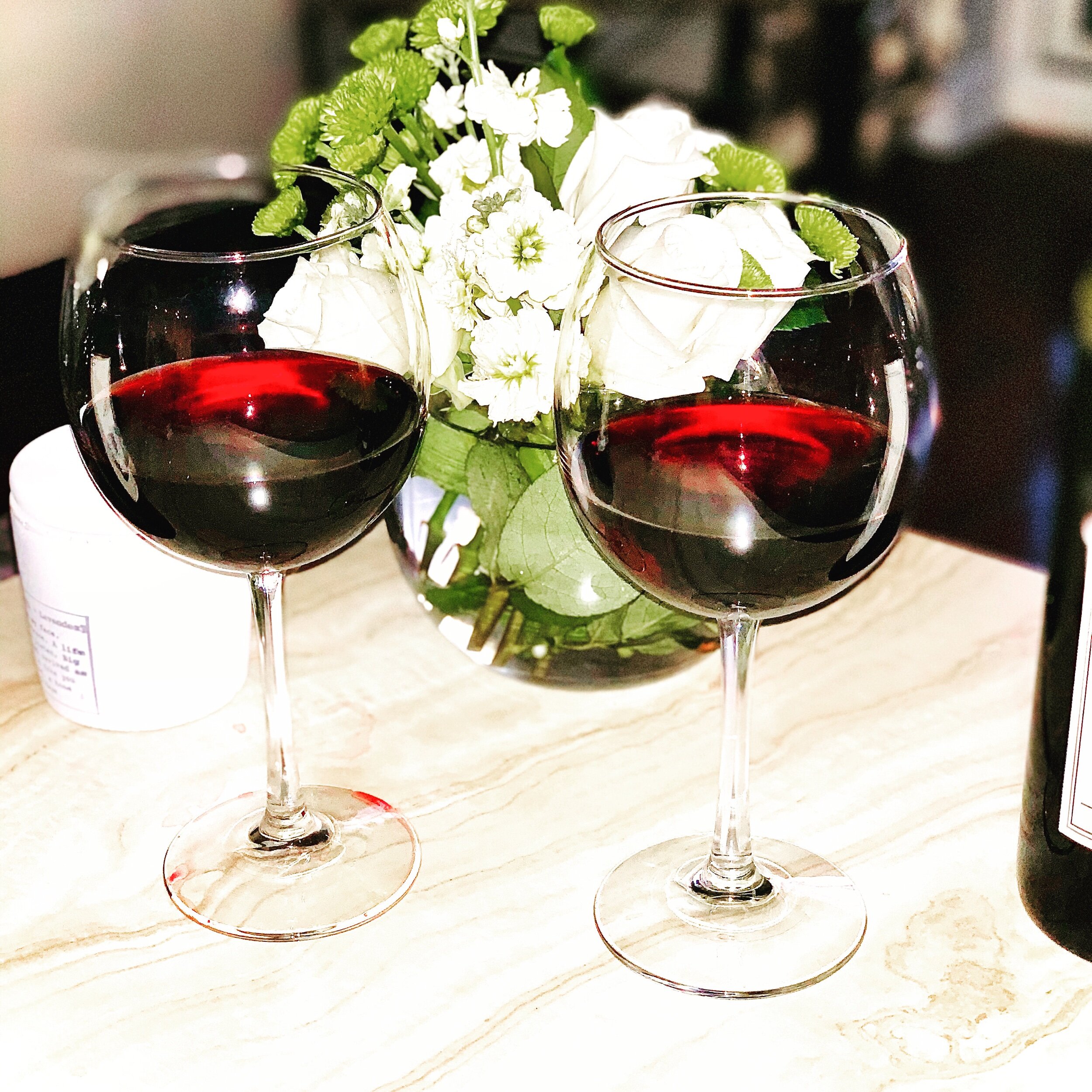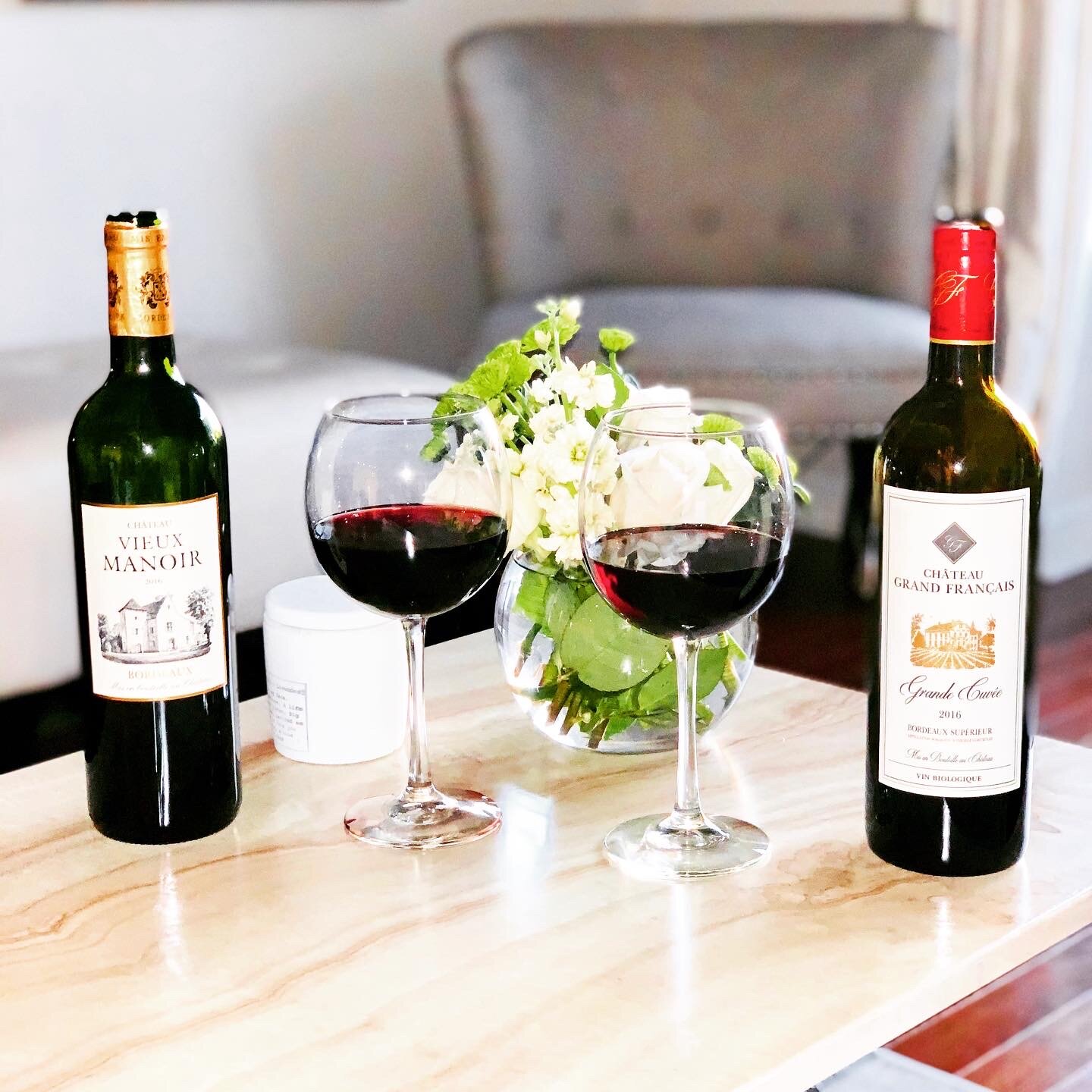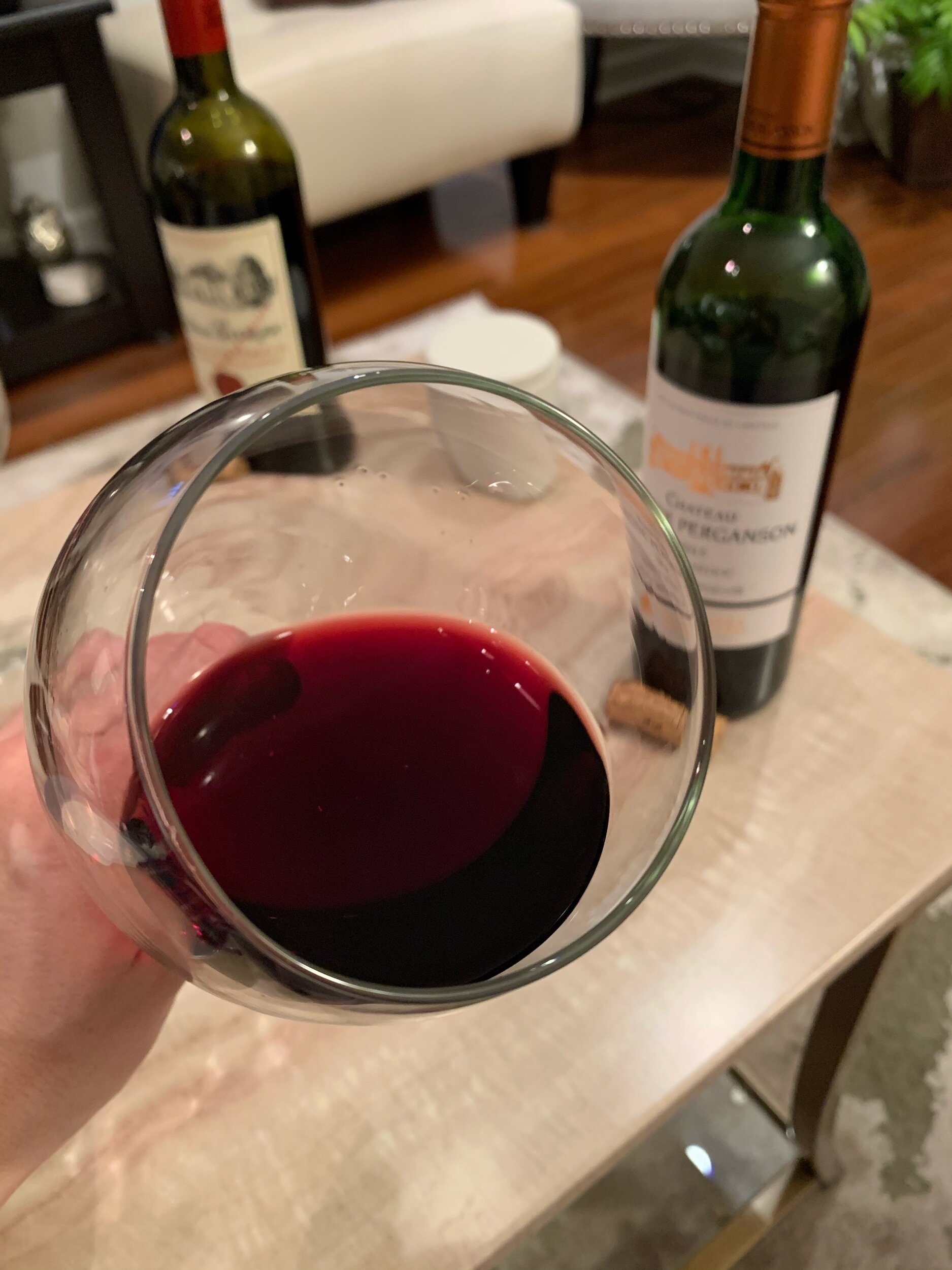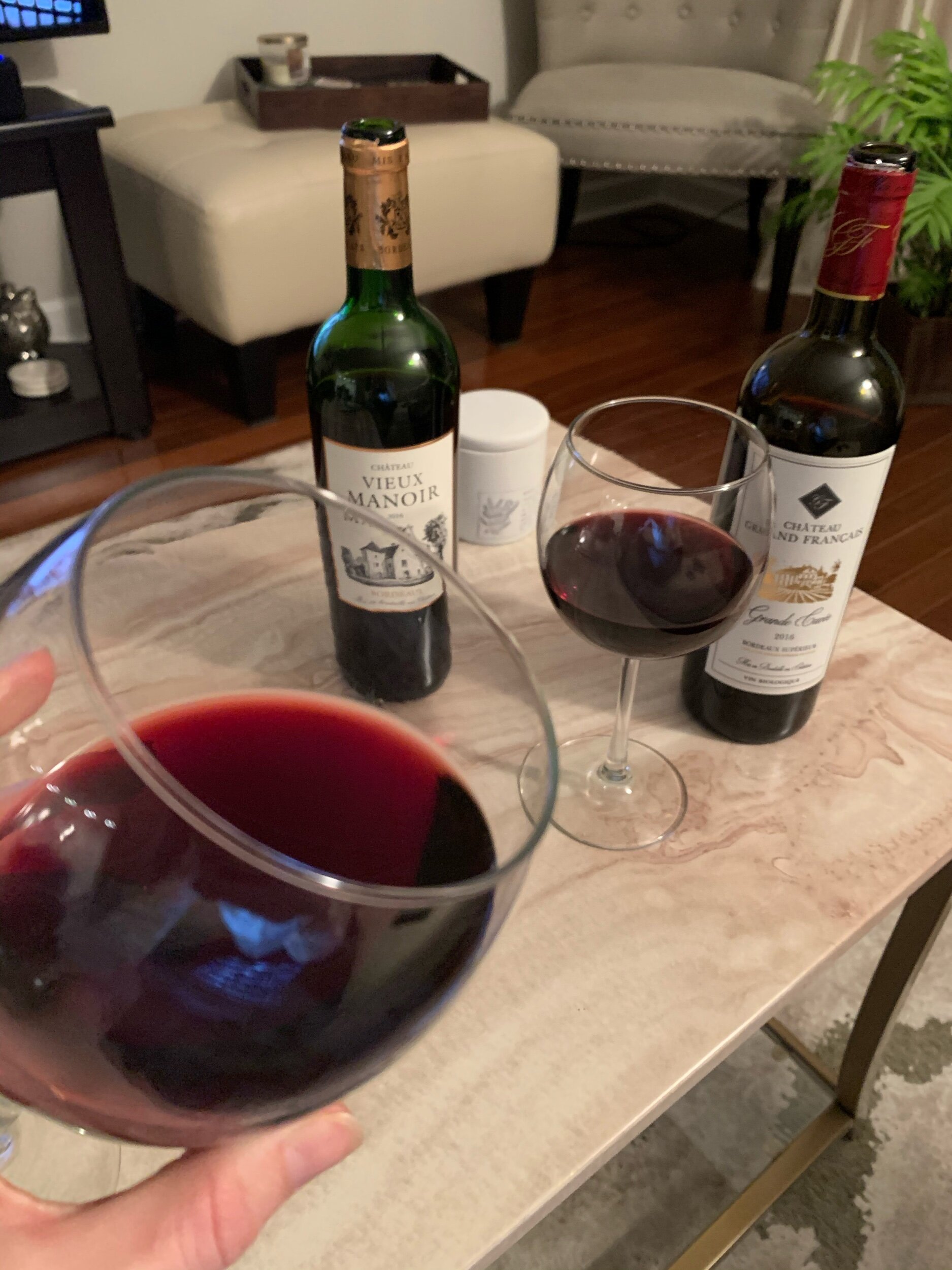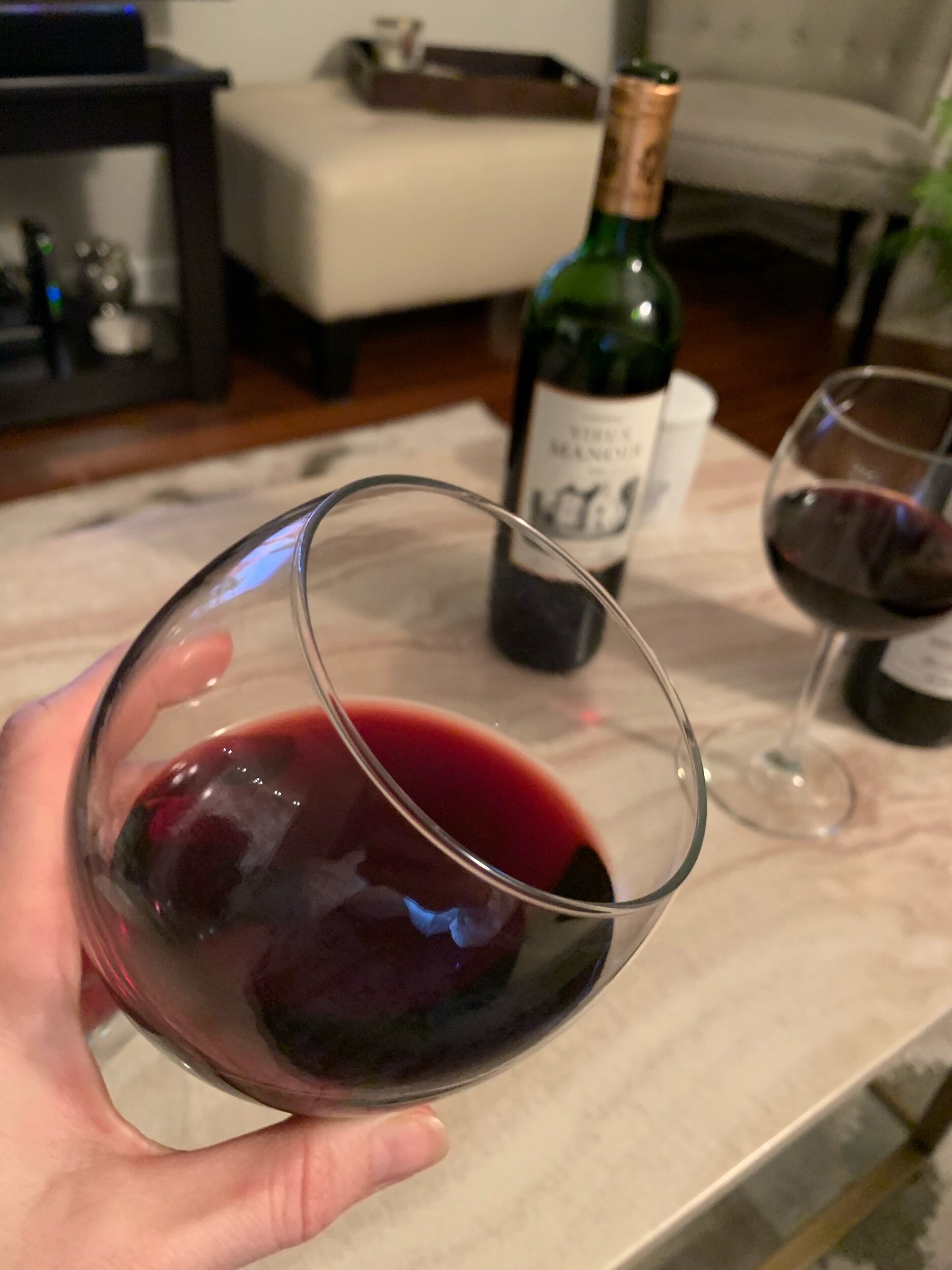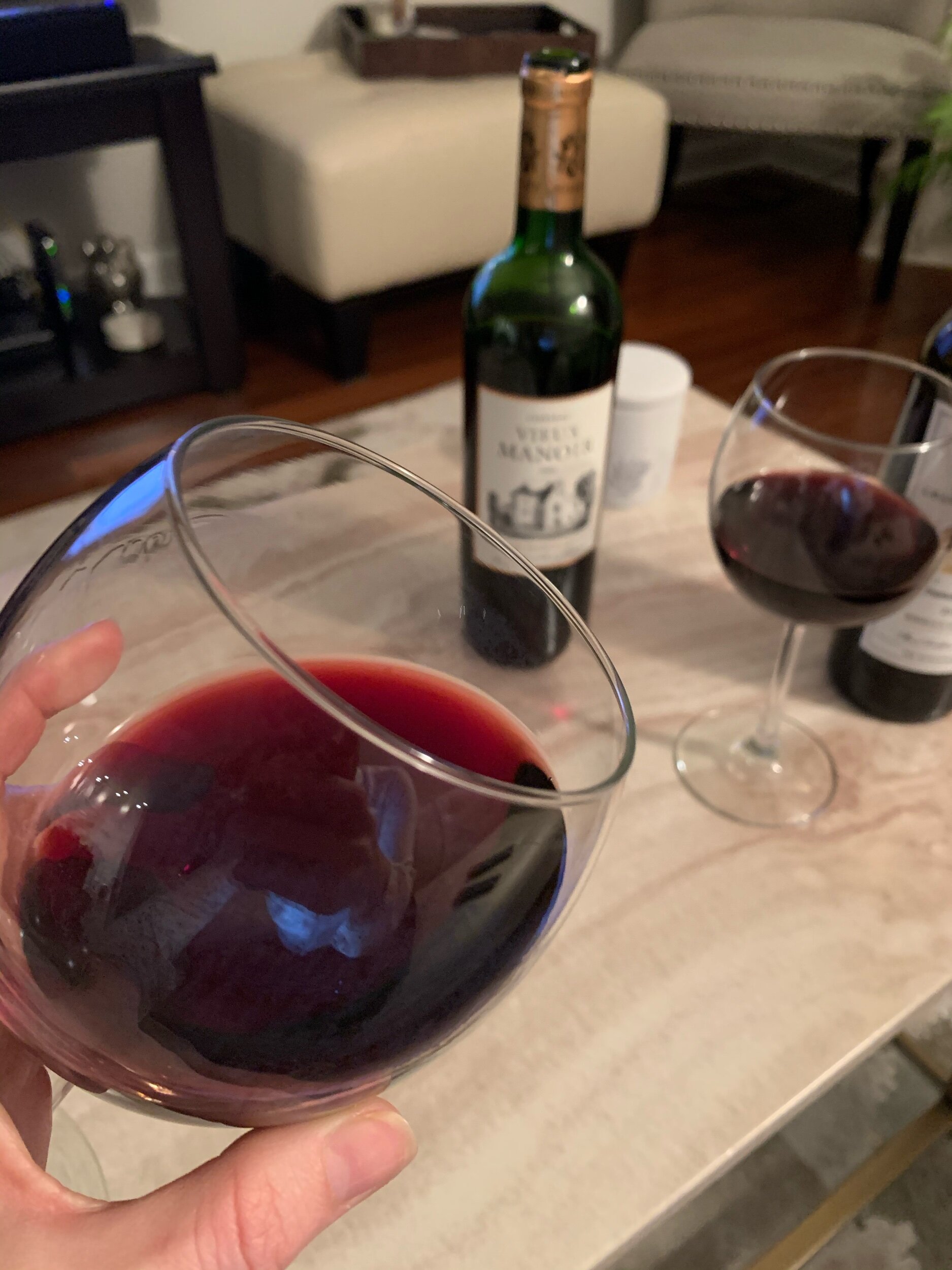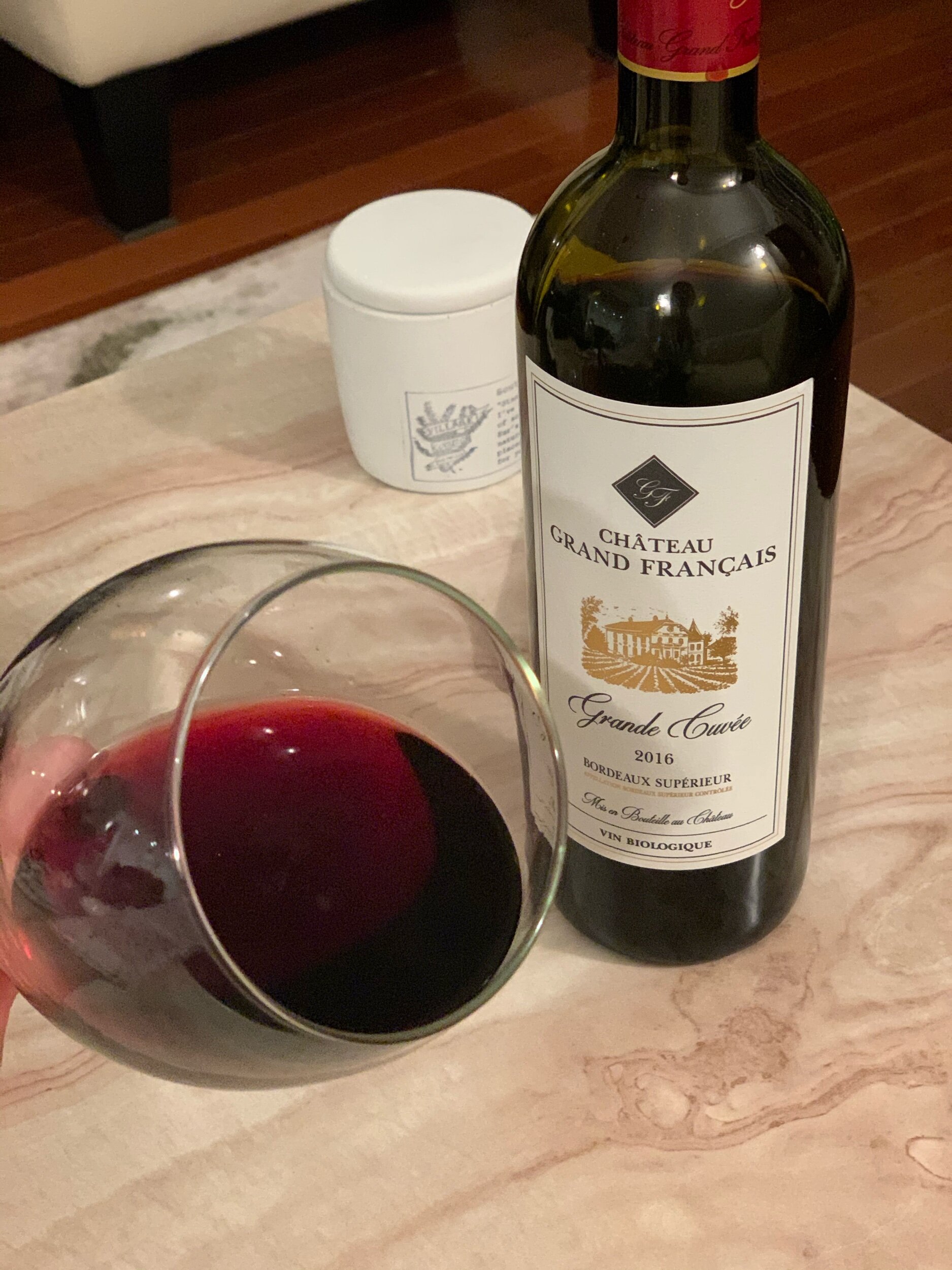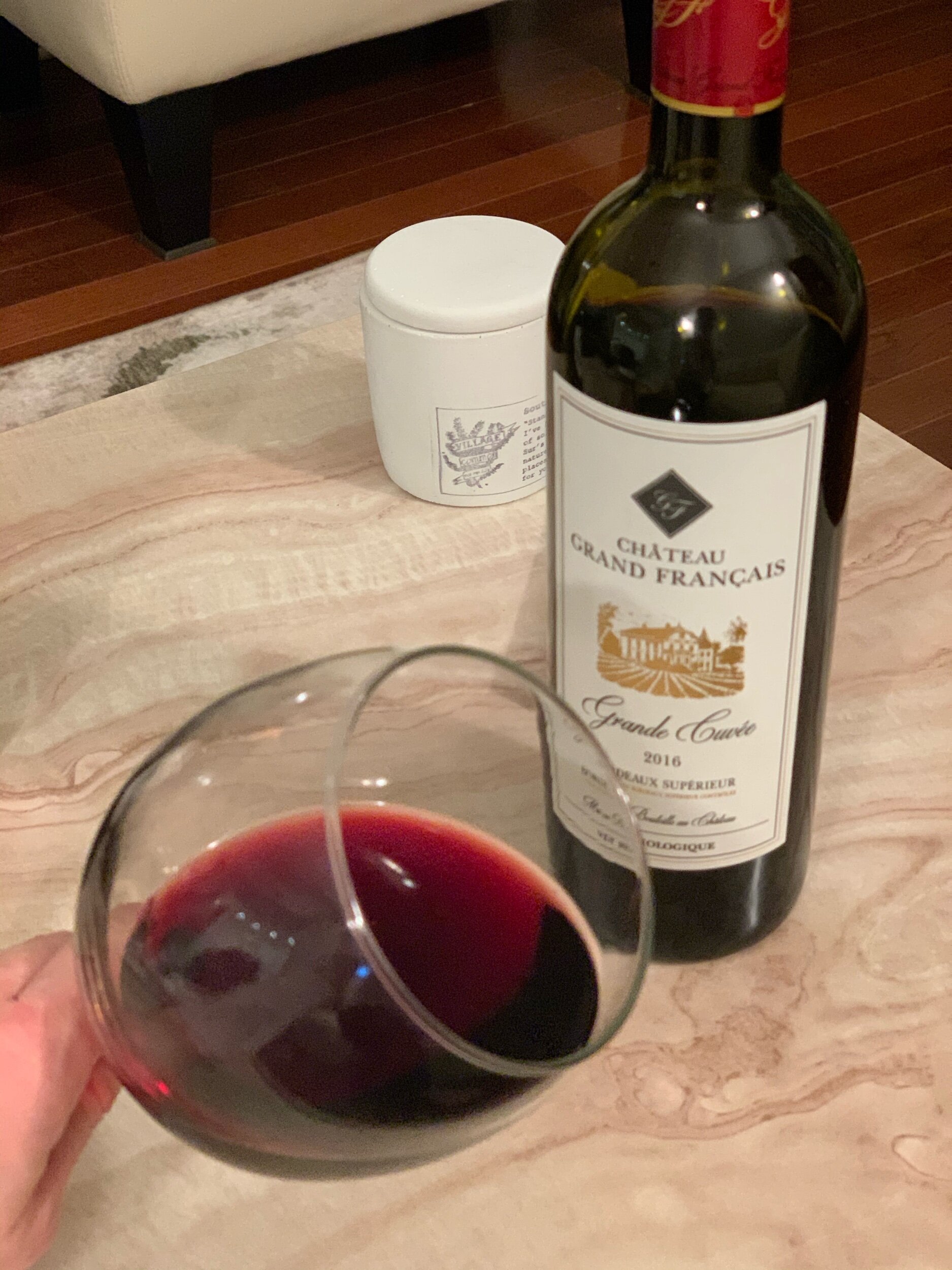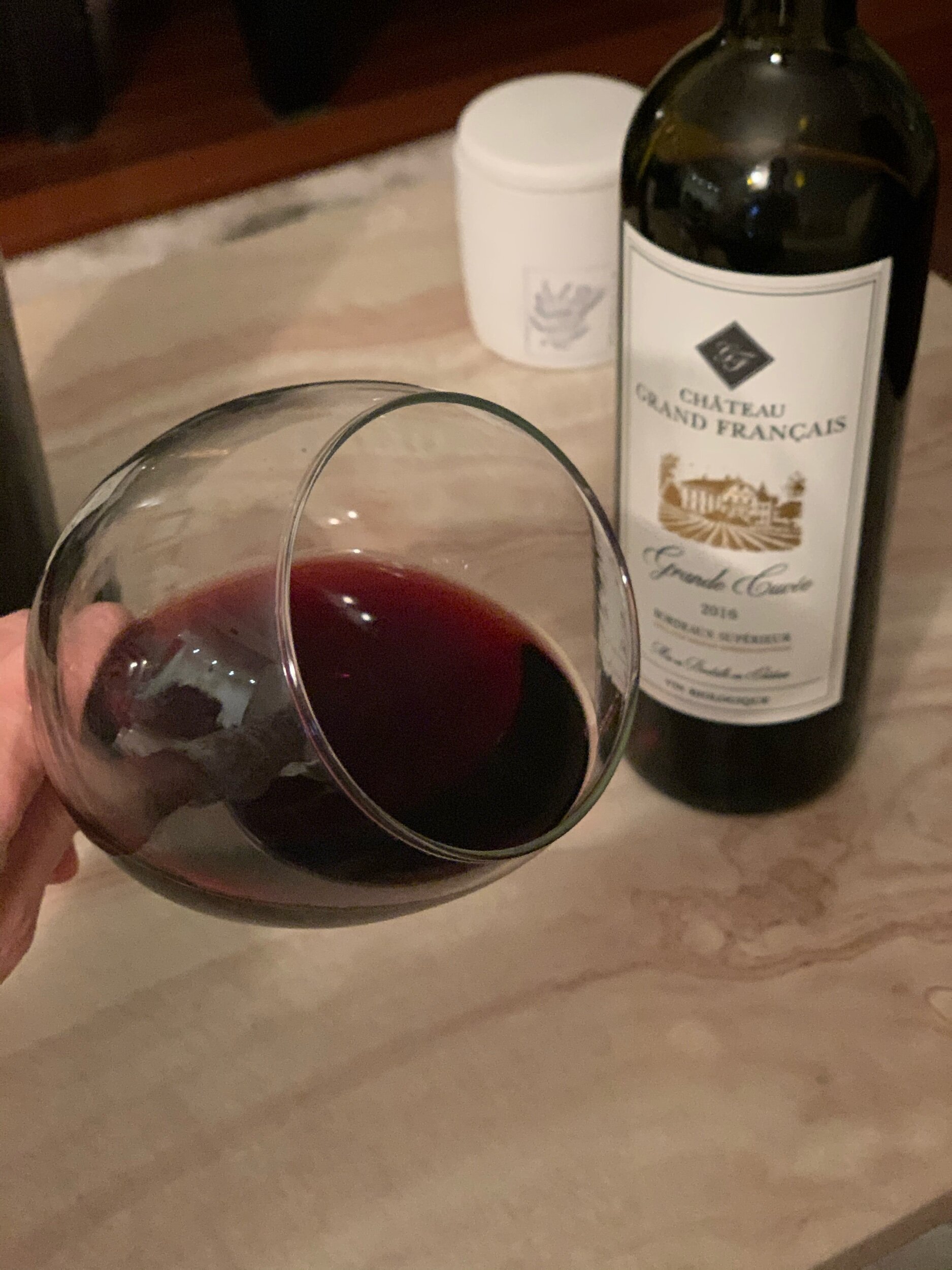You had me at Bordeaux.
Why all the love you may ask? Because this beautiful blend includes all of my favorite things.
While Fraulein Maria may have sang about “raindrops on roses and whiskers on kittens,” my favorite things include the bold red wines of Cabernet Franc, Cabernet Sauvignon, Petite Verdot, Merlot, and more! Don’t you agree!
“You had me at Bordeaux” – Beloved by many, this French blend highlights some of the world’s favorite and most classic varietals of modern wine.
The deep purple builds in color as it pours into your glass, mostly from the Cabernet Franc, Malbec & Petit Verdot. Even with just a little to the blend, this wine’s color really shows through - how pretty, indeed!!
Located in the southwest of France, the Garonne River runs through the actual city of Bordeaux, located in the center of the region, naturally dividing land into a Left and Right Bank. You may recognize the Left Bank area as it includes the popular Médoc and Graves, while the Right Bank is home to Libournais, Bourg, and Blaye. From the left, the Médoc itself divides into Haut-Médoc (the upstream or southern portion) and Bas-Médoc (the downstream or northern portion, often referred to as simply "Médoc"), with various subregions dividing into more and more subregions, just like a beautiful collection of Matryoshka or Babushka Russian Nesting Dolls popping out over & over. This historic region has been making wine for centuries and has quite the classic story of how the popularity of the wine spread across Europe. (We’ll save that story for another pour, but to give you a little taste – it has everything to do with Queens & Kings of France & England!)
All of Bordeaux’s regions, except Libournais, are denoted by their own appellation and are governed by the “Appellation d'origine contrôlée laws,” dictating which grape varieties may be included, what the alcohol level should be, how the pruning and picking methods should go, and on it goes with rules on the planting, appropriate yields, winemaking techniques, and more. These laws are common in most of the wine world, especially within the classic French regions and wines.
More importantly, the thing to remember about this style of wine is the story of the blending. There are white AND red Bordeaux wines so it does matter which style you are referring to, but the most popular you will see is the red, simply referred to as Bordeaux. Traditionally, Bordeaux red wines are a blend of two or more of the region’s red grape varieties. Per French law, Bordeaux red wine grapes are restricted to Cabernet Sauvignon, Cabernet Franc, Merlot, Petit Verdot, Malbec, and occasionally Carménère, though Carménère is not as common to find. Majority of the blends are made of Merlot, Cabernet Sauvignon, and Cabernet Franc. The other varietals are used to balance the acidity, taste, and overall body components of the wine creating its own unique adventure with every sip.
These red blends can be found at different blend amounts but make a medium to full-bodied wine. To ensure the best flavor and tasting of Bordeauxs, bottles should be stored at appropriate temperatures for some time and allowed to open for at least 30 minutes or more (you’ll learn why shortly!) Once the wine opens up, your glass will be filled with aromas of black currant, plums, and earthy notes. Though it’s always hard to describe what exactly you may be picking up in each pour, many identify the notes to be similar to wet gravel or even pencil lead. The tastes carry through at first sip but builds to more fruit forward flavors covering your tongue with occasional minerality. The tannins are the encore presentation taking over your pallet with what some have described as “prickly, savory, mouth-drying tannins.” (One of my favorite descriptions I’ve recently read from a fellow blogger! A bit more adventurous than the “ooh, I love those spicy, peppery tannins” my sister gave it, but she was certainly right as well!)
I originally purchased two different bottles at the beginning of February to open and taste for the post. They were both very good, one a little more than the other, think it had more to do with the grapes in each blend and the time allowed to open up. The second certainly got better with air but didn’t stay fresh as long. It was definitely a good wine; it was just the other was even better! (Personal preference, I love a good blend with more Cabernet Franc.) If I can’t have all five or six of the classic Bordeaux blends, my perfect trifecta includes the top three of Merlot/Cab Franc with a bit of Cabernet Sauvignon. This perfect combination always rounds out a textbook Bordeaux blend.
So back to the store I went and dedicated more time to paying attention to each and every sip of my next two Bordeaux pours. (You’ll learn as you spend more time with me, I believe there’s no better way to learn wine than to “practice, practice, practice!”)
As I started to swirl the 2015, there was nothing more appropriate than Melody Gardot starting to play in the background. Trying to find the perfect tune to go along with these lighter but happy blends, I should have known “Les étoiles” was the best selection! Oh “the stars” were certainly shining in this glass! Have you poured yourself one yet?
The 2015 Chateau Larose Perganson Haut-Medoc was deeper in color and you can see it at first pour! This wine is 60% Cabernet Sauvignon and 40% Merlot from sustainable vineyards aged 100% in French oak barrels with about 40% being new oak. The dark ruby color shines through. The bottle recommends decanting for an hour before you serve to allow the aromas of small red & black berries to open and fill the glass. More of a purple from the initial pour, the wine doesn’t offer much at first, but don’t walk away yet! The wine may initially smell a little like feet, but the taste proves potential. The beautiful thing about old world wines and wines made to age is they take their time and are very worth the wait!
Opening the second bottle, we had a 2016 Chateau Recougne Bordeaux Superieur. This blend includes 78% Merlot, 12% Cab Franc, and 10% Cabernet Sauvignon. Opposite the above Haut-Medoc, this Right Bank wine is located just west of Libourne and is produced to age well as many of their 1950 & 1960’s vintages, which are claimed to still be vibrant & full of life. Though those bottles will likely be more expensive, this 2016 blend is available at $13-18 per bottle.
You can feel, smell & taste the 2016 as it opens. Lighter in color at first, you see slight red-browns around the edges with an overall stimulating ruby garnet red. Longer legs coat the edges of the glass as you swirl and the wine aerates. Before it totally opens, you may taste the alcohol and power towards the back. Don’t get too excited to taste before it aerates and allow the wine time to breathe before you sip more. The aromas come through strong. It’s hard to tell at first, but you may be able to pick up some cinnamon, clove in the spice, or could it be that cedar Bordeaux’s are known for?
The color in the first pour builds as do the flavors as the wine opens up.
A little later, “Good Golly Miss Molly” came on next and Little Richard was right! The colors appeared with the stars and the flavor “make me ting-a-ling-a-ling” with each sip!
Not overwhelming with almost no tannins at all, this wine has just enough flavor to keep you pouring. Unlike most traditional Bordeaux’s, these are smoother and not overpowering in flavor.
The musty nose continues but rounds out in both bouquet and flavor. My pallet experiences a fruity dance on the tongue, but it isn’t too strong to hit any specific notes, just an overall slightly subtle taste.
Once the wine completely opens, it has an incredible nose! The type of musty nose that tingles in the best way.
But I guess that wasn’t enough, after a long day the next week, I was in need of a somber, relaxing Thursday and decided to try a local Atlanta wine shop my parent’s neighbor, who lives south of the city, highly recommends.
Official Tasting 02: Vieux Manoir – another fantastic open. You can smell the deep “musty” spice – aged leather and spicy tobacco. The bouquet gets fruitier as you smell down to the bottom of the nose. The musty of course goes away as the wine opens. As you swirl, thick sheets coat the glass. Then very, very slowly, long, profound legs begin to strengthen as they build down the sides. I’m very excited to taste this wine more! Great so far with a light Greek tortellini and romaine salad with seeds that help enhance the taste of mild chocolate with a little pepper in each sip. (There’s nothing better than a good salad, and when you can find a good wine to pair! As you scroll through the photos below and are looking closely, you can see I made this salad for the first tasting, too! A perfect pairing!)
The spice subtly lingers when you take a deep breath in of the bouquet. The taste is mild and even at first sip grips your tongue – not obnoxiously or aggressively but strong like the hug you need and haven’t had in a while from a good friend or loved one wrapping around the edges and through the center nice and strong. With the spice and tug on your pallet, the subtle fruity flavor builds, but again, not in an overwhelming way. This wine definitely has bolder fruit notes but would not be described as a fruity wine, in a good way. This could be something I drink time and time again! And at the price of $15 or so, it would be what I turn to on future “much-needed” wine kind of Thursday nights, Sunday snuggles, or over a nice dinner that lingers on!
Thank you, Terry, for recommending pH Wine Merchants. Little did I realize as Atlanta has changed so much, this beloved wine store is in the heart of Peachtree Hills tucked neatly next to the Treehouse restaurant, a place we visited for Saturday lunch back in the day! I walked into this beautiful shop with an amazing design and big open windows; it was warm and welcoming, like walking into a friend’s home, with a highly engaging and excellent wine tasting going on. The Italian accent was incredible speaking to the specifics of the wines they were pouring, and I was able to peruse the wines over the tasting’s laughs and merriment.
Chateau Grand Francais was my second choice and certainly needs more time to open. At $25-30ish a bottle, this was the middle to higher Bordeaux at the fantastic shop. I’m sure they had more to offer and plan to ask for help in future purchases so we can explore the region a little more! What drew me to this bottle was the majority of Cabernet Franc in the blend. One of my absolute favorites, there is nothing truer than a Cabernet Franc wine (we’ll dive into this guy in the next story) blended with Merlot and Cabernet Sauvignon. The percentages completely mirror my winery’s Meritage (my former Virginia employer) – especially the blend when I first started. What’s so great is even though it’s so similar in structure of “grapes,” it’s completely different in all other flavor, color, build, structure, body, and wine.
As the wine opens & comes alive, so do their tannins. I cannot wait to taste this wine after a little more time out of the bottle! Bordeaux’s are a great example of how the 30 & 30 rule takes on a new twist – Bordeaux wines are recommended best at $30 per bottle with 30 minutes to open. What I really love about the pH Merchant store was their temperature of the wines. I’m not sure if it was because of the cooler day and night in Georgia, but each bottle I picked to consider felt right – as in the right temperature right. Storing at the right temperature ensures the best pour when allowing the bottle to open and breathe to its best tasting ability.
As it breathes, a seriously fascinating fruity flavor comes over the wine. It wasn’t what I was expecting as this true French Bordeaux left much to want before it opened up but gave way to perfection when it was ready. The edges clearly show this bottle could continue to age. It was a little clear around the sides. The color showed the four years since harvest as it wasn’t as bright and clear as younger, less aged bottles would be, but the wine was made to age even more resulting in bolder edges all the way around.
With every sip, it opens a little more – though if you are not wanting to taste the experience of how the wine develops in the air, I highly recommend letting the wine open and allow to breathe in a decanter for the perfect pour. Crack this bottle for a special dinner and walk away to continue whatever you are working on! “It will be worth the wait, too!” (Only you crazy vino dorks like me may find it fascinating to watch and savor as the wine develops.)
So there we have it, four Bordeaux blends to open and explore. The best part of researching the wines by the region is you can always find something similar to taste and compare. Sometimes you can find the same bottle or producer, but you don’t necessarily need the specific label. It’s all in the flavor you learn to like, figuring out what types you prefer, and where the wines are produced. This will help create conversation during your next wine shopping experience – strike up a short chat with the store clerk and see what they recommend.
And remember, “practice makes perfect” so don’t stop after the first pour 😊.
This will be an area we’ll certainly come back to taste as I never get enough. The region is so complex, I always learn more. Plus, I’d like to spend more time pouring different ranges of priced bottles to really dive into the complexity behind blends, especially those with historic backing.
Any recommendations of other Bordeaux blends or wines to consider? Share with me so we can pour some more! Excited to sip & savor together! Till next time, cheers!!










